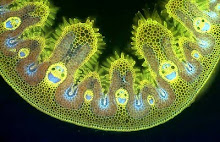I'm not usually a great fan of double flowers but I do admire peonies and these two double-flowered varieties are so completely, excessively over-the-top in the multplicity of their petals that they have a particular charm. This one, Bowl-of-Beauty, puts me in mind of some elaborate ice cream confection served up at the seaside; a knickerbocker glory of a flower. Those white writhing filaments in the centre of the flower are mutated stamens.
I'm not certain which cultivar this one is because it had lost its label by the time I rescued it from the bargain reduced price section of a garden centre at the end of the season, with just a solitary leaf left to identified it as a peony. It cost me 50p. I think it's called 'Sarah Bernhardt', a cultivar that's been around since 1906 and an exotic flower for a very exotic actress. It looks as Parisienne as a can-can dancer's underskirts, with its endless tiers of petals.
Here is the lady in question, romantically portrayed by the photographer Nadar
... and here's a later studio portrait, showing that she liked flowers (although her corsage looks as though it's composed of Bourbon roses).
(Image source:http://en.wikipedia.org/wiki/File:SarahBernhardt.png)
Most peonies have a short but spectacular flowering period. Paeonia lactiflora was introduced from China in 1784 and is extremely hardy. By Victorian and Edwardian times scores of cultivars had been bred and it became immensely popular. I have only ever tried growing peonies from seed once, an attempt that ended in ignominious failure. After waiting 18 months for seed to germinate I tipped them out of the pot, without realising that they produce fragile fleshy roots before any sign of a shoot appears. They had all germinated but every single root snapped in half. It was a good way to learn that patience is a virtue, but I still kick myself for it....






















